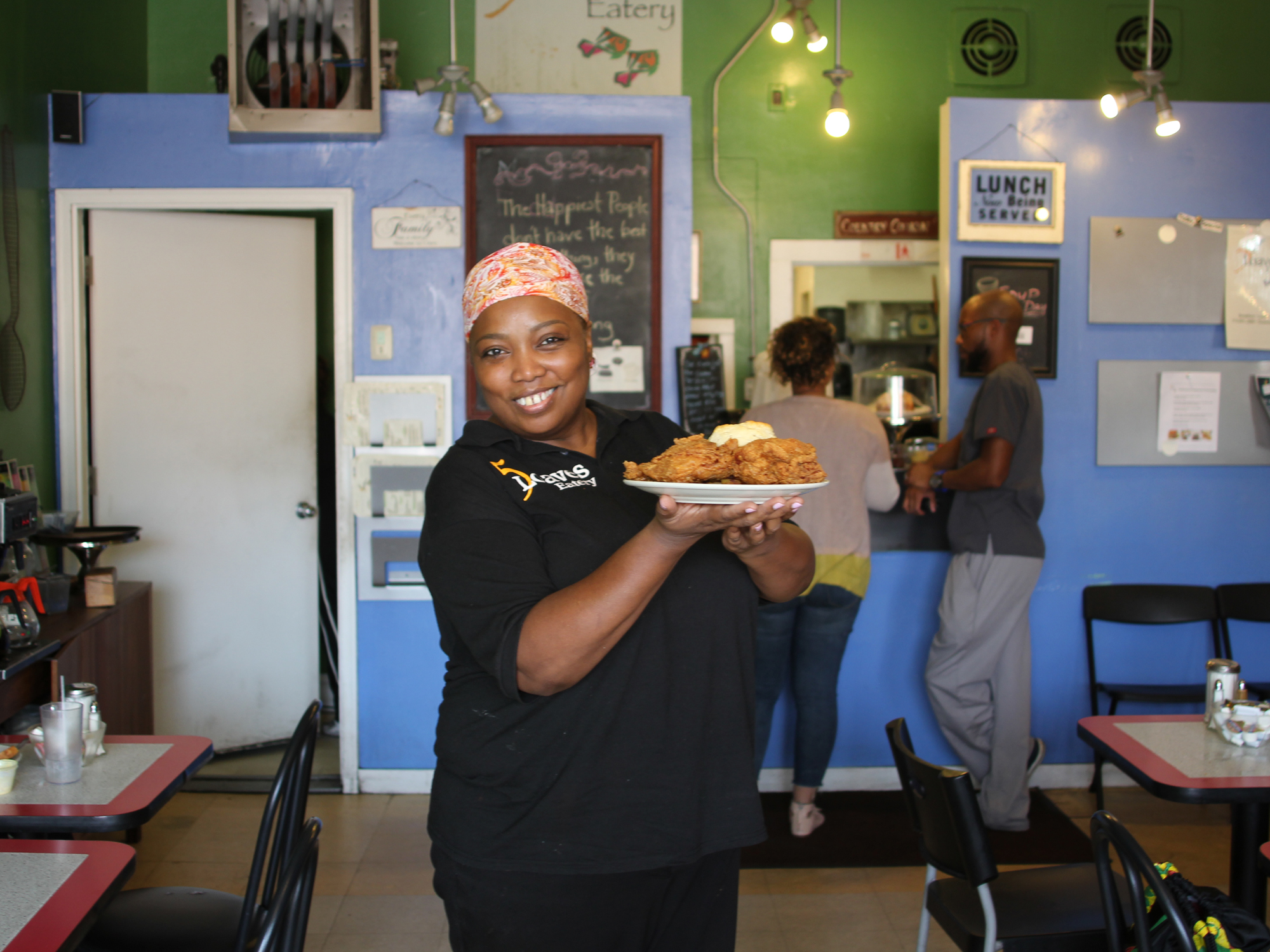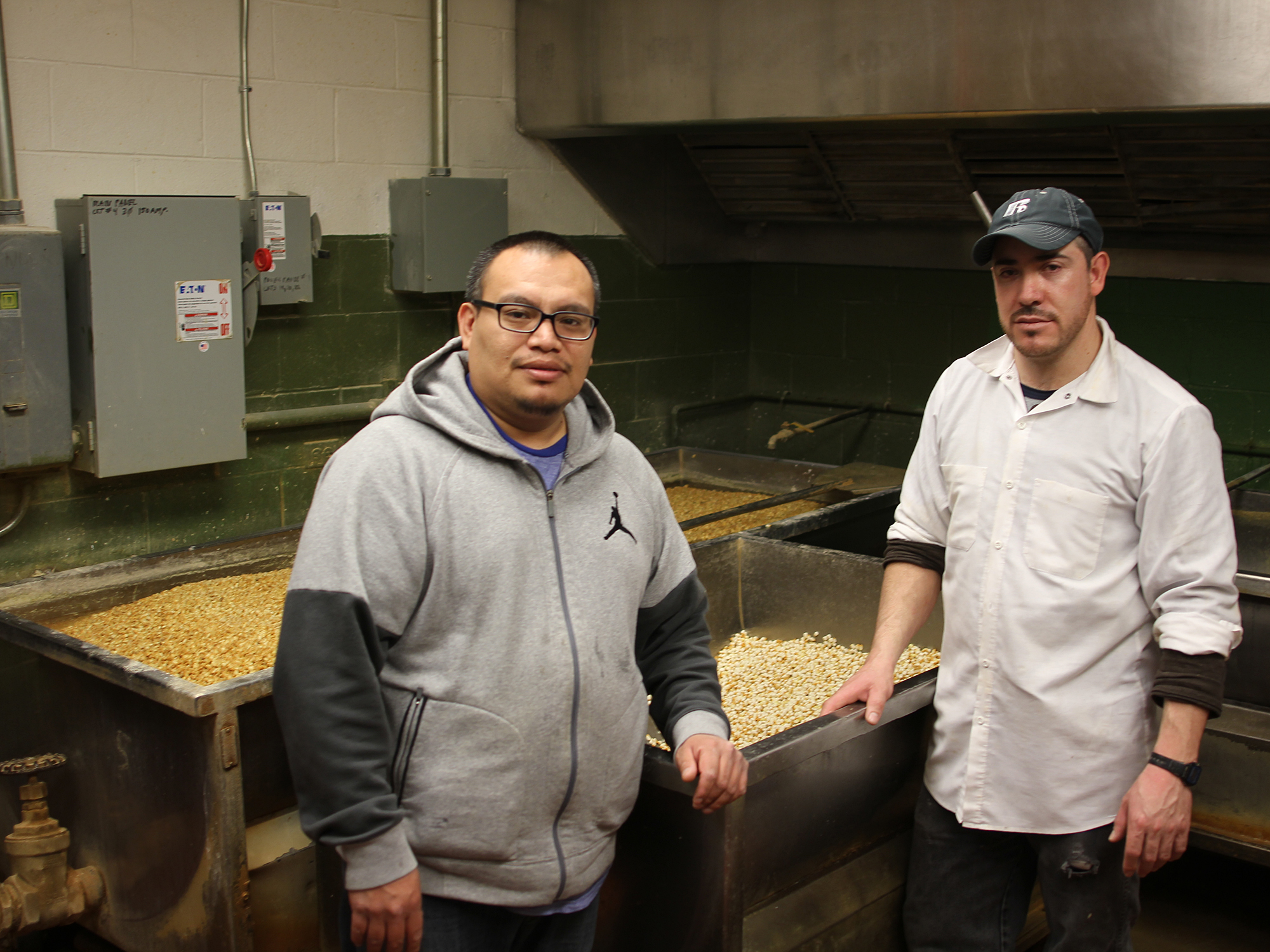A COUPLE OF WEEKS AGO I WAS at a James Beard Foundation event raising culinary school scholarship money at a downtown hotel, and unaffiliated with any group, I wound up grabbing a seat at the Rockit Ranch table (Billy Dec is on the committee for the event). One of the people I was next to was Michael Morales, chef de cuisine at Sunda. It wasn’t long before we were comparing notes on favorite places to eat, and he told me about a place that had just opened next to Arami. “The quality of the meat is better than any other Mexican food in the area,” he said. “You can taste her love for cooking in her food.”
Well, you don’t have to tell me twice. The Mexican restaurant that does things better than most is my unicorn, to use a phrase that’s popped into the culture in the last couple of years in a variety of contexts. When you find the one that does things a little better than the five other Mexican restaurants on its block—makes things from scratch, tries harder, does birria or pastor right—give that unicorn a hug, and share it. Michael Morales did, and now I will too.
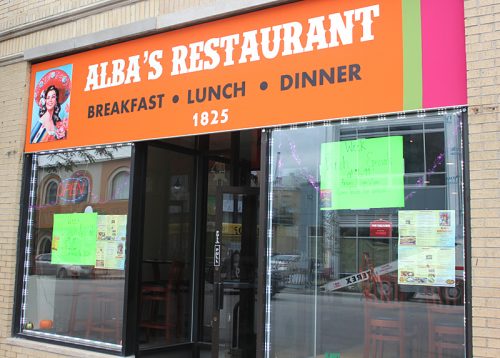
OPENING IN SEPTEMBER ALONG THIS STRETCH OF Chicago avenue was a homecoming of a sort for Alba Saavedra—she was born at St. Mary’s hospital a few blocks away, but when she was one her parents moved back to Guerrero. She’s been back in the U.S. for 17 years, since the birth of her son Aldrin, and all she’s done during that time for a living is operate restaurants—first one called Los Salsas at Belmont and Central Park, then another in Melrose Park called La Cabaña.
It was her partner for the last dozen years, Arnold Cepeda, who pushed for this location. Cepeda, born in Durango, has been a waiter at Erie Cafe in River North since it opened 22 years ago, and every workday he drove in from Melrose Park along Chicago avenue. “Every single day I pass by, and I look at the neighborhood,” he says. “In the past, 25 years ago, it used to be the worst neighborhood. But now, people are more friendly. And then we saw the highrises going up, it’s going to be more people. I always had a dream to open a little business in this area.”
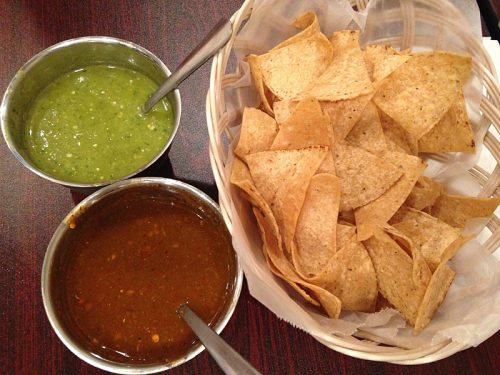
Housemade salsas

Pork tamale
A year or two ago Saavedra had an ice cream shop at Diversey and Milwaukee which wasn’t doing very well, and the owner of this building happened to go in the shop. “She remembered [Alba] from when she was little,” he explains. “They were from not the same town, but close. And they used to live together when she came to this country.” She told them that she had a space that would make a good restaurant. Arnold says “I told her, don’t think, it’s my dream, let’s go.”
They closed the ice cream stand and spent over a year turning a former jewelry and clothing store into a restaurant. They’re not entirely done with the process—ultimately they plan on building out a bar and having a liquor license—but for now, it’s a bright (and currently Halloween-decorated) family restaurant, in progress.
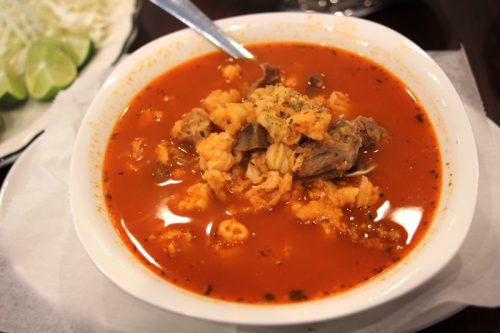
Pozole

Enchiladas with housemade mole
Basically it’s the same menu she’s been making in restaurants for 17 years, and when I ask her what her specialties are, she rattles off things from every part of the menu. The mole in the style of Teloloapan is homemade, from spices and tomatoes and chocolate; she says it takes a full day to make. So are the salsas, red and green. And the tamale which she offers me, gratis, on my first visit, after my son and I order our entrees. And the pozole and the menudo.
Everything I try is well-made and tastes freshly-made and flavorful; the only thing I raise an objection to is that the chicken in mole is slices of chicken breast and not a quarter or half chicken on the bone. “That’s what I tell her!” Cepeda says. “It has more flavor.”
It turns out Cepeda has his own area of influence on the menu—having worked so long in a River North steakhouse, he has firm opinions on steak, and what’s more, on how to cook them—he takes me back into the kitchen to show me a rarity in Mexican restaurants, a char-broiler as opposed to the usual flat-top grill. When he brings out a standard plate of arrachera, skirt steak, it’s an unusually thick and tender example of the cut, expertly broiled and, most surprisingly, brought to the table at medium rare. (Skirt steak in Mexican restaurants tends to be thinner and uniformly medium.) At $20.99 for a 14-oz. steak, it’s a little expensive for a Mexican restaurant but dirt cheap for steak in Chicago, a tender, tasty ribbon of carnivorous pleasure for the price. (He and I wind up sharing it between us once it’s been photographed.)
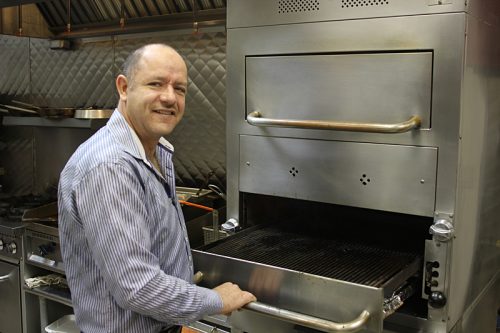
Cepeda with char-broiler

Carne asada
This stretch of Chicago is still plenty dotted with Mexican restaurants, so I ask Saavedra if her customers are mostly Mexican. “80, 90% is American,” she says, and they seem to be fairly savvy Mexican diners—”Steak, and mole, and pozole,” she says have all been popular items.
“Yesterday we had a couple of ladies walk in,” Cepeda says, “they know already what they’re going to eat. Chile rellenos and enchiladas. Cleaned the plate,” he adds, laughing.
Other than it taking so long, they’ve really had only one hitch: one night shortly after opening, Saavedra was startled to find firemen in her kitchen. They were there for her neighbor. Arami, which had a kitchen fire which put them—but fortunately nobody else on the block—out of commission for a month or so. “I was scared. I didn’t know what was going on,” she says. “They said there was a fire, but I said, you came to the wrong place, there’s no smoke in here. So they went back out.” I have to think they’re the only ones who’ve left dissatisfied to date.
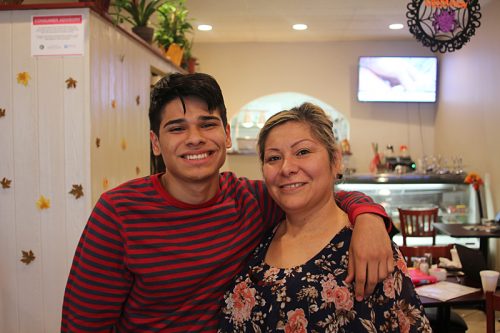
Alba Saavedra with her son Aldrin
Michael Gebert is tender yet char-broiled as editor of Fooditor.
Latest
Join the Discussion
After you comment, click Post. If you're not already logged in you will be asked to log in or register with Disqus.






